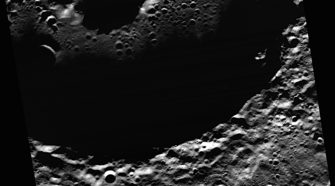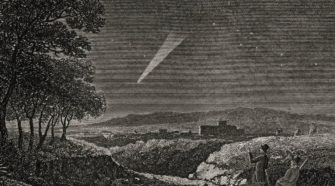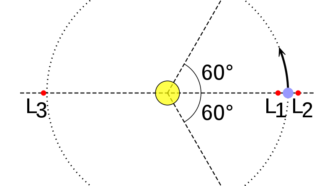Week 42
This Week in History: October 11-17
OCTOBER 11, 1983: The InfraRed Astronomical Satellite (IRAS) spacecraft discovers the “asteroid” now known as (3200) Phaethon. Phaethon had the smallest perihelion distance of any asteroid known at the time and was soon found to be traveling in the same orbit as the Geminid meteors, suggesting it may be their parent object and thus may …
Comet of the Week: The Great Comet of 1811
Perihelion: 1811 September 12.76, q = 1.035 AU Once the orbital calculations for Comet Hale-Bopp C/1995 O1 were made and it appeared that it would be making a “Great Comet” display a year and a half in the future, it was natural for those of us at the time to search for historical analogs. A …
Special Topic: Trojan Asteroids
In any orbital configuration involving two, and only two, objects – for example, Earth and the sun – the orbital motion can be solved directly from Isaac Newton’s Law of Universal Gravitation; the mathematical solution is complete and analytical. As soon as additional objects are added to the mix, however, things become much more complex, …



